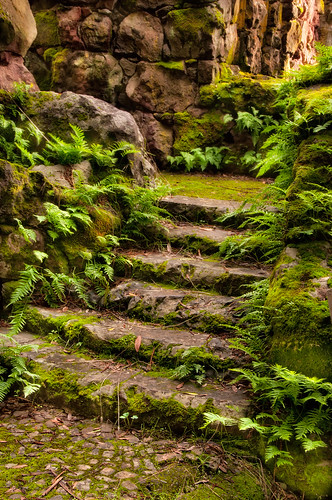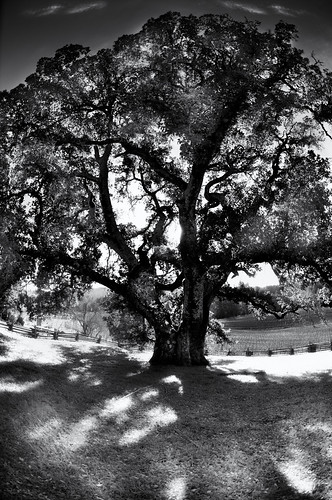
Wolf House Stairs, photo by Harold Davis. View this image larger.
Over the school break I took the kids up to visit Jack London State Historic Park, near Glen Ellen in the Sonoma Valley. The shot above shows the back staircase of Wolf House, London’s dream mansion. The place is well worth visiting, with a museum, the cottage that London’s wife lived in until the 1950s, and the remains of the model farm that London created.
Wolf House is in ruins, and it burnt down before Jack London got to live in it, under mysterious circumstances. You approach it with a hike of about a mile, and are surprised by the scale and ambition of the thing. It’s worth remembering the audacity of Jack London—no mere writer of adventure tales for boys, he lived life on a large scale, created a model farm along scientific principles with the aid of Luther Burbank (this was not the way people thought back in those days in California), had a stint as a quasi-pirate himself, was a committed revolutionary, and wrote a number of books aimed at adults that expressed his radical socialist ideology.
The museum in Jack London Historic Park expresses the gusto with which he lived life, and displays numerous momentos, such as a wolf pelt, aborigine spears, “real” boomerangs, and a model of the Snark, the sloop that Jack London used on San Francisco Bay to practice oyster “piracy.”
The shot at the bottom of this story shows a large California oak tree that’s on the preserved portions of the London model farm.
The boys became interested in Wolf House after reading a fictional account of magical deeds at the place in the Rick Riordan novel The Lost Hero. Surely Riordan set his scene well: the place does have a magical feeling to it.
In keeping with the kids appreciation of the place, and Rick Riordan’s take, I fancy that my stair photo is more about evoking a sense of this magic than it is about the literal place.
View this image larger.
